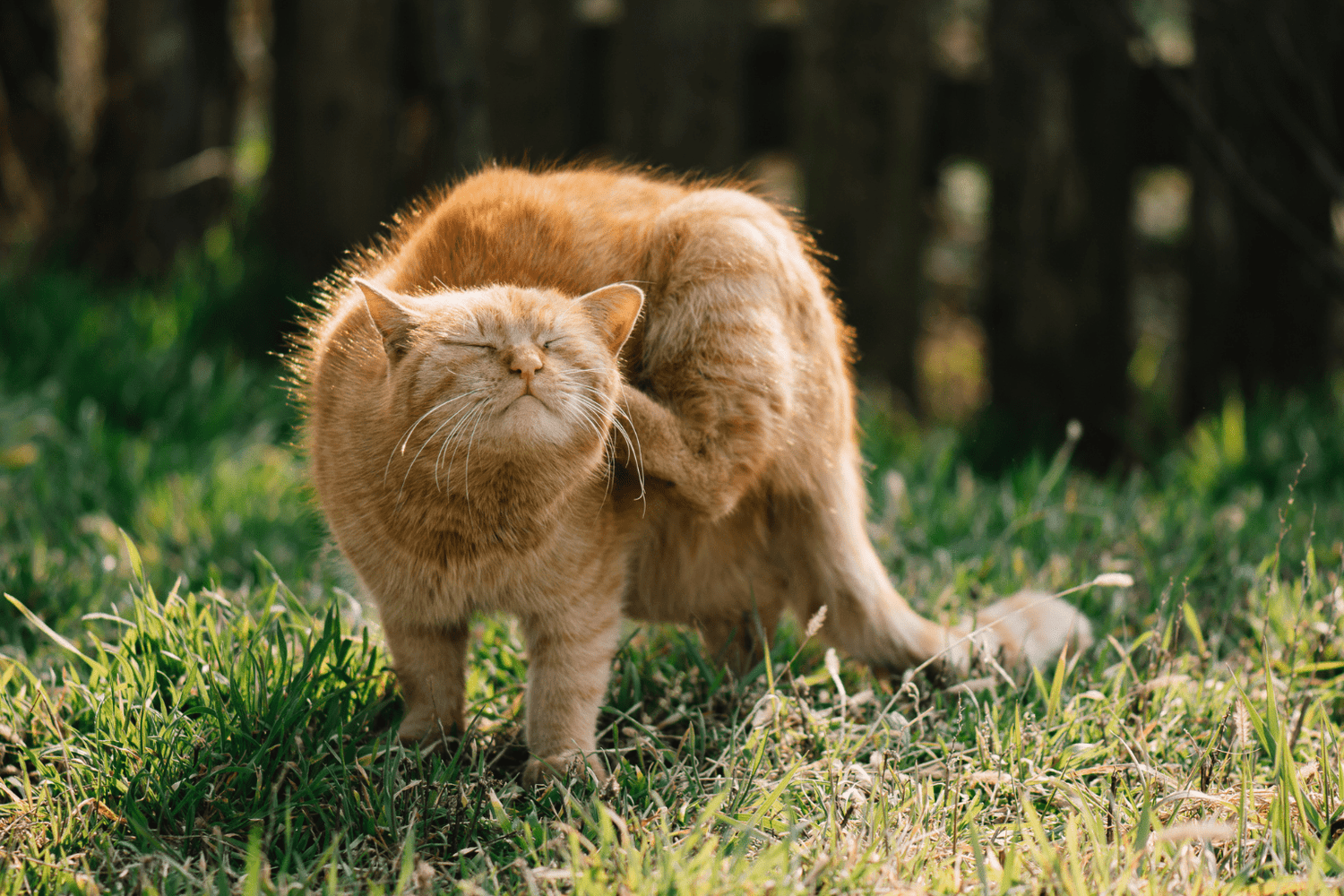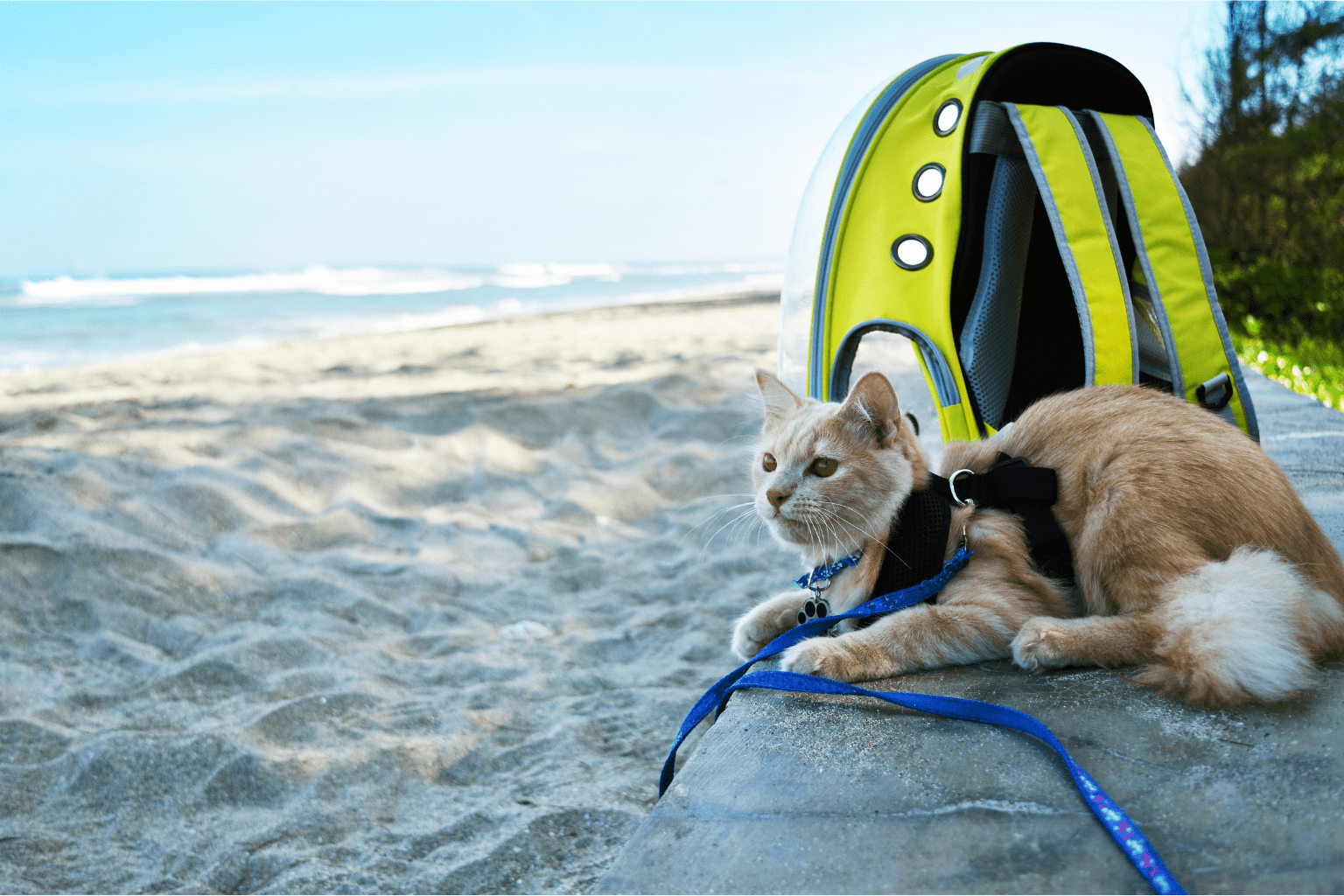Key Takeaways
- The myth that cats have nine lives is a longstanding piece of folklore.
- Cats actually have only one life, just like other animals.
- Their exceptional survival instincts and agility contribute to their reputation for resilience.
- This agility and quick reflexes make cats excellent at escaping danger.
- Understanding the truth about cats' lives can help owners focus on ways to enhance their longevity.
Table of Contents
- The Magic Number, Why People Say Cats Have Nine Lives (and What It Really Means)
- Fact vs. Fiction, How Many Lives Do Cats Actually Have? (The Real Science)
- From Kitten to Sage, Every Stage of a Cat's Unique Life Journey
- What Shapes a Cat's Real Lifespan? Key Factors Every Pet Parent Should Know
- Cat Years vs. Human Years, How Old Is My Cat, Really?
- That Extra Edge, Why Some Cats Live Much Longer Than Others
- How to Help Your Cat Live Their Best (and Longest) Life, Naturally
- Top 7 Ways to Help Your Cat Beat the Averages, BestLife4Pets' Natural Longevity Action Plan
- Common Cat Longevity Myths, And The Real Science Behind Feline Aging
How Many Lives Do Cats Have? Unpacking the Myth, the Science, and Real-World Ways to Boost Your Cat's Longevity
The age-old question "how many lives do cats have" has sparked curiosity for centuries. While folklore claims nine, the truth is both simpler and more fascinating. Cats have exactly one precious life, but their remarkable survival instincts and agility have earned them legendary status as nature's ultimate escape artists.
Understanding the real science behind feline longevity helps us move beyond myths to focus on what truly matters: giving our cats the healthiest, happiest life possible. From ancient Egyptian reverence to modern veterinary insights, let's explore why cats became immortalized as multi-lived creatures and discover practical ways to help your feline friend thrive for years to come.
Real-life survival stories fuel this enduring myth. Cats have survived 32-story falls from New York skyscrapers, emerged from building collapses, and recovered from injuries that would be fatal to other animals. Their flexible spines, lightning-fast reflexes, and innate caution create an almost magical aura of invincibility. For pet parents seeking to support their cats' resilience, Cat Hip and Joint Pain Relief and Cat Allergy Relief & Immune Support can be valuable tools for maintaining comfort and vitality throughout every stage of life.
The Magic Number, Why People Say Cats Have Nine Lives (and What It Really Means)
The belief that cats possess multiple lives traces back to ancient Egypt, where cats were revered as sacred animals connected to the goddess Bastet. Egyptians observed cats' uncanny ability to survive falls, escape predators, and recover from seemingly fatal situations, abilities that seemed almost supernatural.
European folklore cemented the nine-lives concept during medieval times, when cats' nocturnal habits and glowing eyes in darkness reinforced their mystical reputation. The number nine held special significance across cultures as a symbol of completion and divine power, making it the perfect match for these enigmatic creatures.
Cultural Variations in Cat Lives
- United States & UK: 9 lives
- Spain & Germany: 7 lives
- Turkey & Arabic countries: 6 lives
- Italy: 7 lives
Real-life survival stories fuel this enduring myth. Cats have survived 32-story falls from New York skyscrapers, emerged from building collapses, and recovered from injuries that would be fatal to other animals. Their flexible spines, lightning-fast reflexes, and innate caution create an almost magical aura of invincibility.
Fact vs. Fiction, How Many Lives Do Cats Actually Have? (The Real Science)

Despite centuries of folklore, cats have exactly one life, just like every other living creature. The persistent myth stems from genuine biological advantages that make cats exceptional survivors, but these traits don't grant them supernatural powers.
The famous "righting reflex" allows cats to twist their flexible spines mid-fall and land feet-first, distributing impact across their bodies. Their low terminal velocity (about 60 mph compared to a human's 120 mph) and ability to spread their bodies like parachutes help them survive falls that would devastate other animals. However, cats still suffer injuries and fatalities from falls, accidents, and illnesses.
Cat Superpowers That Fuel the Myth
- Righting reflex: Automatic mid-air body rotation
- Flexible spine: 53 vertebrae vs. human's 33
- Exceptional balance: Inner ear structure and tail counterweight
- Stealth mode: Silent movement and quick escape abilities
- Night vision: Six times better than human vision in darkness
These remarkable adaptations explain why cats appear to defy death, but responsible pet parents know that how many lives do cats have isn't the right question, it's how we can protect and nurture their one precious life that matters most.
From Kitten to Sage, Every Stage of a Cat's Unique Life Journey
Understanding your cat's life stages helps you provide age-appropriate care and recognize when their needs change. Each phase brings distinct joys and challenges that shape your feline's overall wellbeing.
| Life Stage | Age Range | Human Equivalent | Key Focus |
|---|---|---|---|
| Kitten | 0-12 months | 0-15 years | Socialization, growth, learning |
| Young Adult | 1-3 years | 15-28 years | Peak activity, establishing routines |
| Mature Adult | 4-6 years | 32-40 years | Maintaining health, regular checkups |
| Senior | 7-10 years | 44-56 years | Comfort care, mobility support |
| Geriatric | 11+ years | 60+ years | Gentle care, quality of life focus |
Kitten stage demands intensive socialization and safe exploration. These early months shape your cat's personality and comfort with handling, other pets, and new experiences. Proper nutrition during growth spurts sets the foundation for lifelong health.
Adult cats thrive on consistent routines, mental stimulation through play, and preventive healthcare. This is when many cats develop their personality and establish health patterns that will carry them through their golden years.
Senior cats (7+ years) require gentler care with increased attention to joint comfort, dental health, and subtle changes in behavior. Many pet parents notice their older cats sleeping more, moving slower, or seeming less interested in high perches, all natural parts of aging that can be supported with thoughtful adjustments to their environment.
Key Insight: Unlike the myth of how many lives do cats have, your cat's single life can be optimized at every stage with age-appropriate care that honors their changing needs.
What Shapes a Cat's Real Lifespan? Key Factors Every Pet Parent Should Know
While cats don't actually have multiple lives, several concrete factors dramatically influence how long and well they live their one precious life.
Indoor versus outdoor living creates the most striking difference. Indoor cats typically live 13-17 years, while outdoor cats average just 3-7 years due to traffic, predators, disease exposure, and weather extremes. This doesn't mean indoor cats are automatically healthier, they need mental stimulation, exercise, and environmental enrichment to thrive.
Genetics and breed play significant roles, though mixed-breed cats often enjoy "hybrid vigor" with fewer inherited health issues. Breeds like Siamese and Russian Blues frequently reach their late teens, while some flat-faced breeds may face respiratory challenges that impact longevity.
Preventive healthcare, nutrition, and spay/neuter status round out the major influences. Cats receiving regular veterinary care, high-quality nutrition, and early spaying or neutering tend to avoid many cancers and behavioral issues that can shorten lifespan. The question isn't how many lives do cats have, but how we can help them make the most of their one amazing life. For more on supporting your cat's health, see our guide to natural cat supplements for treating common health issues in cats and kittens.
Cat Years vs. Human Years, How Old Is My Cat, Really?

The old "multiply by seven" rule oversimplifies feline aging. Cats mature much faster in their first two years, then age more gradually.
The real conversion: A one-year-old cat equals roughly 15 human years, while a two-year-old cat matches a 24-year-old human. After age two, each cat year adds approximately four human years. This means your 10-year-old tabby is roughly equivalent to a 56-year-old person, mature but not elderly.
| Cat Age | Human Equivalent | Life Stage |
|---|---|---|
| 6 months | 10 years | Kitten |
| 1 year | 15 years | Young Adult |
| 2 years | 24 years | Adult |
| 5 years | 36 years | Prime Adult |
| 10 years | 56 years | Mature |
| 15 years | 76 years | Senior |
Understanding your cat's "human age" helps you provide appropriate care, from the high-energy needs of a "teenage" one-year-old to the comfort-focused care of a "senior citizen" 15-year-old. If you're curious about other common feline health concerns, you may want to read about how to tell if your cat has worms.
That Extra Edge, Why Some Cats Live Much Longer Than Others
Some cats defy averages spectacularly. Creme Puff holds the Guinness World Record at 38 years, while Lucy reached 39, and Grandpa Rex Allen lived to 34. These remarkable cats share common longevity factors worth emulating.
Consistent routines appear in most long-lived cats' stories. Their families maintained regular feeding times, predictable environments, and steady veterinary relationships. Stress reduction through routine seems to support the body's natural resilience over decades.
Indoor living with enrichment protects these cats from external dangers while providing mental stimulation through puzzle feeders, climbing trees, and interactive play. Many record-holding cats lived in homes where they felt safe to be themselves without constant vigilance.
Perhaps most importantly, their families paid attention to subtle changes and supported their cats' wellbeing naturally. Rather than wondering how many lives do cats have, these pet parents focused on making their cat's single life as vibrant and comfortable as possible through every stage. For cats who may be experiencing anxiety or stress, consider the benefits of Pet Relax Cat Calming Anxiety Relief to promote calm and overall wellness.
How to Help Your Cat Live Their Best (and Longest) Life, Naturally
Supporting your cat's natural longevity doesn't require complicated protocols, just consistent attention to their fundamental needs and gentle support for their body's own healing processes.
Species-appropriate nutrition forms the foundation. Cats are obligate carnivores who thrive on high-quality protein with minimal fillers. Fresh water should always be available, preferably in multiple locations to encourage hydration, a key factor in kidney health as cats age.
Natural wellness support can complement good nutrition and veterinary care. Many pet parents find gentle, natural remedies help maintain their cats' comfort and mobility over time. BestLife4Pets formulas offer gentle support for common age-related concerns, helping cats maintain vitality throughout their single, precious life.
Top 7 Ways to Help Your Cat Beat the Averages, BestLife4Pets' Natural Longevity Action Plan

While the myth of how many lives do cats have suggests nine chances, your cat's one precious life deserves every advantage. Here's our proven roadmap for helping cats thrive well beyond average lifespans.
Community Success: Bailey's Second Wind
At 12, Bailey seemed to be slowing down, less playful, stiffer movements. Her mom started with gentle joint support and improved nutrition. Six months later, Bailey was chasing feather toys again. "She acts like she's got those nine lives after all," her mom shared.
1. Create a Safe Indoor Haven
Best for: Dramatically extending lifespan (indoor cats average 13-17 years vs. 3-7 for outdoor cats)
Transform your home into an enriching sanctuary. Install cat trees, window perches, and interactive toys. Secure balconies and remove toxic plants. Indoor cats avoid traffic, predators, and disease exposure while staying mentally stimulated.
2. Feed for Life Stages
Best for: Supporting optimal health from kitten to senior years
Kittens need frequent, nutrient-dense meals. Adults thrive on consistent schedules with quality protein. Seniors benefit from easily digestible foods and smaller, more frequent portions. Fresh water should always be available, many cats prefer fountains to still bowls.
3. Establish Preventive Veterinary Care
Best for: Catching health issues before they become serious
Annual checkups for young adults, twice yearly for seniors. Early detection of kidney disease, dental issues, and arthritis can add years to your cat's life. Don't skip dental cleanings, periodontal disease affects overall health. For ongoing dental support, explore Cat Dental Care & Bad Breath Remedy designed to support oral health and fresh breath naturally.
4. Support the Body's Natural Healing
Best for: Gentle, ongoing wellness support without harsh side effects
Natural remedies can complement traditional veterinary care beautifully. BestLife4Pets pellets help support joint comfort, digestive health, and emotional balance throughout your cat's life stages. Many pet parents find these gentle formulas particularly helpful for senior cats managing multiple comfort needs.
5. Maintain Healthy Weight
Best for: Preventing obesity-related diseases that shorten lifespan
Overweight cats face increased risks of diabetes, arthritis, and heart disease. Monitor portions, encourage play, and resist those pleading eyes at treat time. Your vet can help establish ideal weight goals. If your cat struggles with mobility, Cat Hip and Joint Pain Relief can provide additional support for stiffness and discomfort.
6. Reduce Environmental Stress
Best for: Supporting immune system and emotional wellbeing
Cats thrive on routine and safe spaces. Provide hiding spots, maintain consistent feeding times, and introduce changes gradually. Chronic stress weakens immune systems and can contribute to behavioral issues. For more tips on supporting your pet's emotional health, check out our article on do cats have allergies too.
7. Stay Alert to Subtle Changes
Best for: Early intervention when health issues arise
Cats hide illness instinctively. Watch for changes in appetite, litter box habits, grooming, or social behavior. Senior cats especially benefit from close monitoring, what seems like "normal aging" might be treatable discomfort.
Common Cat Longevity Myths, And The Real Science Behind Feline Aging
The question of how many lives do cats have isn't the only misconception about feline aging. Let's separate fact from fiction with science-backed reality.
| Myth | Reality | Why It Matters |
|---|---|---|
| One human year equals seven cat years | Cats age rapidly in first two years (24 human years), then about 4 human years annually | Accurate age assessment guides appropriate care and health monitoring |
| All cats age the same way | Breed, size, genetics, and lifestyle create significant individual variation | Personalized care plans work better than one-size-fits-all approaches |
| You can tell a cat's age by appearance alone | Health, genetics, and care quality affect appearance more than age | Veterinary assessment provides more accurate age estimation |
| Senior cats should slow down completely | Gentle activity and mental stimulation support healthy aging | Appropriate exercise maintains mobility and cognitive function |
The Science of Feline Aging
Recent research reveals cats experience cellular aging similarly to humans, with oxidative stress and inflammation playing key roles. However, their remarkable healing abilities, the same traits behind the nine lives myth, mean many age-related changes respond well to supportive care. For a deeper dive into the science of feline longevity, see this new research on life expectancy for companion cats.
Kidney function, joint health, and cognitive abilities don't decline uniformly. Some 15-year-old cats maintain kitten-like playfulness, while others show senior changes by age 8. Genetics loads the gun, but lifestyle pulls the trigger. For more on supporting pets after surgery or injury, read our tips on hip and joint surgery after care for dogs and cats.
When "Normal Aging" Isn't Normal
Subtle signs often indicate treatable conditions rather than inevitable decline. Decreased jumping might signal arthritis, not laziness. Increased vocalization could indicate cognitive changes or discomfort. Weight loss in seniors warrants immediate veterinary attention, it's never "just old age." For additional scientific insight, review this peer-reviewed article on feline aging.
Not a substitute for professional veterinary advice.
Frequently Asked Questions
Why do people say cats have nine lives, and what is the origin of this myth?
The myth that cats have nine lives comes from ancient times, especially ancient Egypt, where cats were seen as sacred and connected to the goddess Bastet. This belief grew because cats often survive dangerous situations thanks to their agility and quick reflexes, making it seem like they had multiple lives.
What factors actually influence the lifespan and health of a cat?
A cat’s lifespan and health depend on genetics, diet, environment, and regular veterinary care. Providing natural support, a safe home, and attention to their unique needs helps cats live longer, happier lives.
How do a cat's natural abilities like agility and reflexes contribute to their survival?
Cats’ agility and lightning-fast reflexes help them escape danger and avoid injury. Their flexible bodies and sharp senses make them excellent at landing safely and reacting quickly, which supports their reputation for resilience.
Are there cultural differences in the number of lives attributed to cats, and what do they signify?
Yes, different cultures assign different numbers of lives to cats, like seven in some Spanish-speaking countries or six in parts of the Middle East. These numbers reflect local folklore and the universal admiration for cats’ survival skills and mysterious nature.



